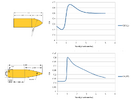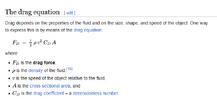A thread that introduced me to another thing to put on my "list" to buy - the Garmin Xero C1. It seems it has pros and cons compared to a Labradar, one of which is that it apparently doesn't give multiple velocity readings at multiple distances, which can be used to calculate the "actual" Balllistic Coefficient.
I've just used the manufacturer's published B.C. which has worked for my purposes out to 500ish yards. I've read, mostly on gun forums, that some manufacturers MIGHT exaggerate the BC of their bullet for marketing and sales purposes. I don't know if that is the case with any bullets I've used, but I am curious to know what member's experience has been regarding published BC and their own calculated BC using equipment such as a Labradar.
Has anyone created a data library with "accurate" BC data results compared to manufacturer's published data? Is it common for the calculated BC to be significantly different than manufacturer's published data? If so, is it because of the velocity assumed, ballistic coefficient being a function of the drag coefficient, which is a function of the flow velocity, which can change based on muzzle velocity as well as decreasing velocity based on the range of the target?
Hello weeds, I'm getting in.
I've just used the manufacturer's published B.C. which has worked for my purposes out to 500ish yards. I've read, mostly on gun forums, that some manufacturers MIGHT exaggerate the BC of their bullet for marketing and sales purposes. I don't know if that is the case with any bullets I've used, but I am curious to know what member's experience has been regarding published BC and their own calculated BC using equipment such as a Labradar.
Has anyone created a data library with "accurate" BC data results compared to manufacturer's published data? Is it common for the calculated BC to be significantly different than manufacturer's published data? If so, is it because of the velocity assumed, ballistic coefficient being a function of the drag coefficient, which is a function of the flow velocity, which can change based on muzzle velocity as well as decreasing velocity based on the range of the target?
Hello weeds, I'm getting in.






 and I could back calculate the BC if it made enough of a difference for me. Now we have laser rangefinders, doppler chronographs, hand held anemometer weather stations, and ballistic calculators on seemingly every device. I sure am lucky they have all of these things I can buy so I'll never miss another shot. Ever.
and I could back calculate the BC if it made enough of a difference for me. Now we have laser rangefinders, doppler chronographs, hand held anemometer weather stations, and ballistic calculators on seemingly every device. I sure am lucky they have all of these things I can buy so I'll never miss another shot. Ever.